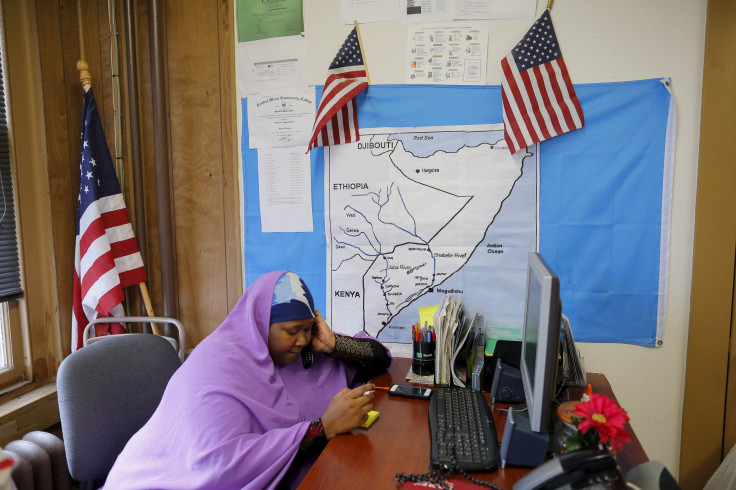Where Do Immigrants Live In The US? Trump Immigration Ban Hurts Muslims In These Cities

President Donald Trump's executive order banning immigrants from seven Muslim-majority countries didn't only create problems for refugees fleeing those countries, it caused problems for legal residents and dual citizens from banned countries already living in the U.S., some of whom were detained for hours at U.S. airports this weekend.
Immigrants from the countries on Trump's travel ban list make up a small percentage of the overall immigrant and foreign-born population of the U.S., but that hasn't stopped them from building communities large and small throughout the U.S.
Below is a look at where in the U.S. people from the seven banned countries have settled with the help of data visualization tools from the Migration Policy Institute that demonstrate where immigrants settled between 2010 and 2014 and census data from the 2015 American Community Survey.
Iran
Iranians living in the U.S. represent the largest group of immigrants from any country on the ban list. There are nearly 400,000 foreign-born Iranians living in the United States. Iranian immigration to the U.S. exploded after the 1979 Iranian Revolution that toppled the U.S.-backed Shah. Much of the Iranian immigrant population settled in Los Angeles, where the term "Tehrangeles" -- a mashup of Iran's capital Tehran and Los Angeles -- emerged to describe the neighborhood between Beverly Hills and West Los Angeles.
Somalia
Somalia has been torn apart by a civil war for decades and hasn't had a functioning government since 1991. The chaos has given birth to a Somali Diaspora that resulted in almost 90,000 foreign-born Somalis living in the U.S., according to 2015 estimates. Much of that population has settled in the Twin Cities region of Minnesota, which is now home to more than 40,000 Somalis. Last year, Somali refugee Ilhan Omar became the first Somali-American state lawmaker in the U.S. when she won House District 60B in southeastern Minneapolis with 80 percent of the vote. Somalis have also settled in Maine, where an estimated 11,000 Somali immigrants now live in Portland and Lewiston.
Iraq
The foreign-born Iraqi population in the U.S. is 215,000. Much of that immigration has happened over the last decade since the U.S. invasion of Iraq. In 2007, the Department of Homeland Security and Department of State began a large-scale program of settling Iraqi refugees in the U.S. Since then, more than 100,000 refugees have been settled. Much of that population has settled in the Detroit area.
Syria
A total of 84,995 refugees entered the U.S. in 2016, and 12,587 were from Syria, more than any other country except the Democratic Republic of Congo. The foreign-born Syrian population of the U.S. is estimated at around 82,000. While many recent refugees have settled in the major metropolitan areas of New York and Los Angeles, some have headed to the Syrian enclave of Allentown, Pennsylvania. The Syrian community Pennsylvania's third largest city dates to the 19th century. Now the region is home to more than 5,000 Syrians.
Sudan
Sudan has long been a nation in turmoil. The Second Sudanese Civil War raged for more than 20 years from 1983 to 2005, displacing 20,000 children who became known as the "Lost Boys," 4,000 of which were settled in the U.S. in 2001. South Sudan seceded from the north to become its own country in 2011, and is now in the grips of a humanitarian crisis. Now there are more 45,000 foreign-born Sudanese living in the U.S. In recent years, much of the refugee population has been settled in the Washington, D.C. metropolitan area, according to the Migration Policy Institute, but a major Sudanese population has grown in Omaha, Nebraska.
Yemen
The foreign-born Yemenis population in the U.S. is around 45,000 people, and the number of Yemenis seeking refuge is increasing as the war in Yemen, which has displaced 3 million people, rages on. Like many other Muslim refugee groups, a significant portion of the Yemeni population entering the country in recent years made their way to the Detroit area.
Libya
The foreign-born Libyan population is small, so small that immigrants from Libya aren't their own census category. The Migration Policy Center doesn't have visualizations of recent Libyan settlement destinations.
© Copyright IBTimes 2024. All rights reserved.












